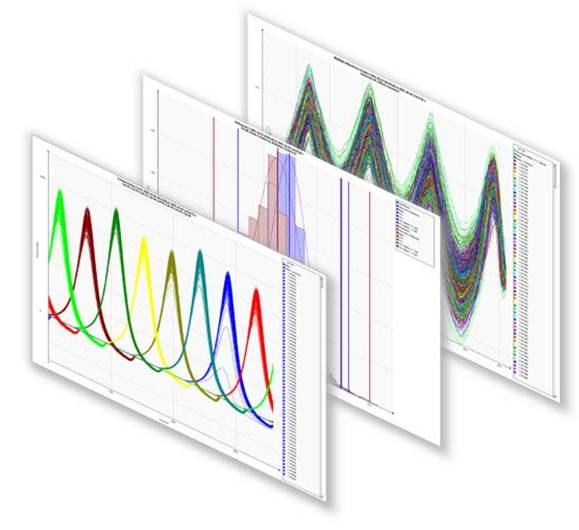Contributed by: Rob Plumridge
Manufacturers are increasingly aware of the need to have long-term accountability to their customers and stakeholders – “we built a good part and have the data record to prove it.” With waveform signature analysis, they have the data trail they need to quickly find the root cause of a problem, determine its scope, and carry out a targeted recall of only the specific serial numbers affected.
This is vital in industries such as automotive, where one supplier may be providing the same part to several automakers. A leak problem in a shock absorber, for example, could lead to a recall of multiple models. Without the right data trail that goes back six to 12 months, or even further, hundreds of thousands more vehicles than necessary could be affected.
Taming big data on the production line

But months’ worth of waveform data is the very definition of “big data.” You need powerful data management and analytics tools to capture, manage, analyze and visualize it all to achieve true continuous process improvement and reduce the number and cost of warranty claims. Consider it an insurance policy for your plant.
Take, for example, an oil pan that fails, resulting in a warranty claim. What is the cause of the failure – a faulty gasket, an improperly installed gasket, bolts that didn’t tighten down correctly? How many different gaskets and bolts are we talking about? How many similar parts are affected? Most importantly, could we have avoided releasing this faulty part with proper testing and data analysis? Getting to the root cause of this flaw could require investigation of a dozen or more fitting and rundown operations, each with its own data set.
Or temperature. Compensating for temperature variations is a persistent challenge with leak testing. A part with a temperature that varies from the ambient temperature can mask or amplify the leak rate. A good part could be scrapped, and a bad part could be released to the customer, resulting in a warranty claim.Operators and quality engineers need comprehensive waveform data to diagnose this issue and take corrective action.
Or what about shortening test cycle times without compromising the integrity of the test? By analyzing historic data, it may become evident that a test cycle can be shortened from 10 to eight seconds, or even less, to maximize production capacity. How? Because the data shows that if an anomalous leak is going to happen, it will occur within the first few seconds of the test. The same waveform trend analysis can also be used to establish and refine the proper limits for the test.
Big data in the factory setting is only getting bigger. For a large manufacturer, leak test alone can generate terabytes of waveform data. How well you navigate this big data lake will impact your profitability and competitiveness in the market.
Want to improve your leak test?
We’ve helped discrete manufacturers achieve unbeatable throughput, reliability and repeatability from leak tests that were formerly a bottleneck and a quality problem. Explore Sciemetric's solutions for leak test on your production line.

